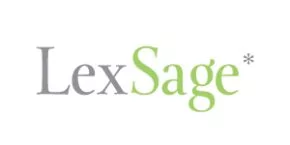Canada has a number of requirements mandating that certain goods have labels AND that certain information be communicated on labels and packaging. Goods may not be imported into Canada if the required markings are not on the goods to be imported. If goods are not marked properly, the improperly marked goods may be seized by the CBSA and destroyed or returned to the country of export. This is a cost that is best avoided – it is better to determine the marking and labelling requirements before the goods are shipped.
There are three primary types of markings:
- Country of origin markings;
- Labelling requirements; and
- French language requirements.
The country of origin marking requirements are set out in the Customs Act and various regulations to the Customs Act. Section 35.01 of the Customs Act provides that:
"No person shall import goods that are required to be marked by any regulations made under section 19 of the Customs Tariff unless the goods are marked in accordance with those regulations."
The Marking of Imported Goods Regulations sets out marking requirements as does the Marking of Imported Goods Order. D-Memorandum D11-3-1 "Marking of Imported Goods" sets out the key CBSA country of origin marking/labelling requirements.
Labelling requirements are established under other Canadian federal laws, regulations, policies and guidelines as well as under provincial laws. Unfortunately, all Canadian labelling requirements are not found in one single place.
Some examples of Canadian labelling requirements (and helpful resources) are:
|
Other Government |
Applicable Law |
Brief Description |
|
Canada Revenue Agency |
Excise Act 2001 |
Tobacco products are highly regulated in Canada and there are very specific labelling and advertising requirements. |
|
CFIA |
Canadian Agricultural Products
Act |
The CFIA regulates what is on food labels in order to keep
Canadians safe and provide information to Canadian consumers. |
|
Industry Canada |
Pre-packaged products must have a label containing a declaration
of net quantity of the product in the prescribed form and
manner. |
|
|
Competition Bureau |
Consumer Packaging and Labelling
Act |
The Competition Bureau has issued the Guide to Consumer Packaging and Labelling Act and
Regulations (October 1999). The Competition Bureau has issued the Guide to the Precious Metals Marking Act and Regulations. |
|
Government of Quebec |
Charter of the French Language and French Language Regulations |
Labels on products sold in Quebec must be in French. There may be other language in addition to French. |
|
Health Canada |
Hazardous Products Act Consumer Products Safety Act, Regulations of Narcotics and Controlled and Restricted Drugs |
Health Canada enforces labelling requirements on controlled
products and containers in which controlled products are
packaged. |
|
NRCan |
NR Can regulates labels regarding energy performance.
NRCan publishes information for importers. |
The content of this article is intended to provide a general guide to the subject matter. Specialist advice should be sought about your specific circumstances.

